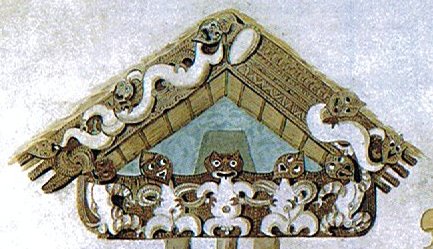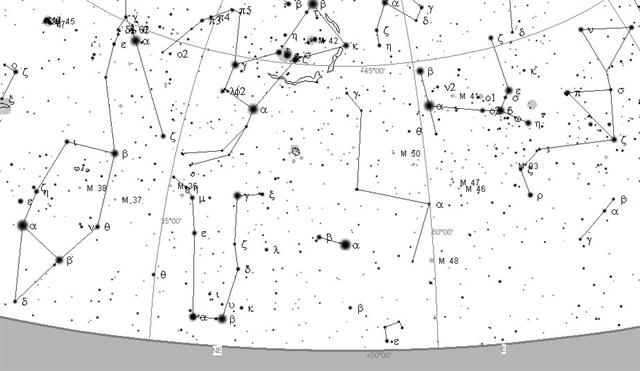|
10. The 7th right ascension hour could be expected to include the 7th lunar mansion Punarvasu with the Twins (Castor and Pollux). But such is not the case - there is no lunar mansion in the 7th hour and the Twins will not come until in the 8th hour:
We have pictorial evidence for a season of waiting, perhaps corresponding to the 7th hour after the head (Heka) of King Orion has come off and before the new twin babies arrive:
... In Hindu legend there was a mother goddess called Aditi, who had seven offspring. She is called 'Mother of the Gods'. Aditi, whose name means 'free, unbounded, infinity' was assigned in the ancient lists of constellations as the regent of the asterism Punarvasu. Punarvasu is dual in form and means 'The Doublegood Pair'. The singular form of this noun is used to refer to the star Pollux. It is not difficult to surmise that the other member of the Doublegood Pair was Castor. Then the constellation Punarvasu is quite equivalent to our Gemini, the Twins. In far antiquity (5800 B.C.) the spring equinoctial point was predicted by the heliacal rising of the Twins ... By 4700 B.C. the equinox lay squarely in Gemini ... The distance from Castor to Procyon is only 2 days and both these stars were on New Zealand connected with months - yet with the order between them opposite to their right ascension values:
It is not easy to see which of the stars has a higher right ascension, Castor or Procyon:
The picture is based on a location in New Zealand (45º S), with northeast close to Pollux and with east at right. To the left is the Auriga constellation with Praja-pāti (δ) at bottom, connected to the Taurus constellation above via Elnath (β). Procyon is in the center of the picture and high above is Orion with Heka and Betelgeuze - from which a pair of 'legs' (or 'feelers') are stretching out towards Tejat Prior and Tejat Posterior in Gemini. Canis Major is at top right with Puppis to its right. The ecliptic goes through Wasat (δ Gemini) and up towards the left, passes close to the north of Tejat Prior (η) and Tejat Posterior (μ) and further up close to the south of the Pleiades (45 Tauri). 7h goes just to the east of Mekbuda (ζ Gemini) and up towards the right, passing close to the west of Adara (ε Canis Majoris). Imagining a line in the sky for 7h and comparing the distance to Procyon with the distance to Castor it is easy to misjudge Procyon to be the star with lower right ascension. The twin stars should be rising close together and Procyon should not disturb their relation. The alternative to have Procyon rising later than Pollux is not possible, because Procyon is rising earlier than the star α in Monoceros (the constellation between Canis Minor and Canis Major) and a short straight line from Pollux to α shows Procyon must rise earlier than Pollux. But of course the explanation of why the Procyon month came before the Castor month could be an ancient tradition according to which this indeed was the case - the proper motion of the stars may have changed their relative positions since then. I decide to use Cartes du Ciel to investigate:
Yes, anciently Procyon did not rise between the Twins. However, it rose later and only sometime in the future will Procyon rise earlier than Castor. |
|||||||||||||||||||||||||||||||||||||||||||||||||||||||||||||||||||||||||||||||||||||||||||||||||||||||||||||||||||||||||||||||||||||||||||||||||||||||||||||||||||||||||||||||||||||||||||||||||||||||||||||||||||||||||||||||||||||||||||||||||||||||||||||||||||||||||||||||||||||||||||||||||||||||||||||||||||||||||||||||














